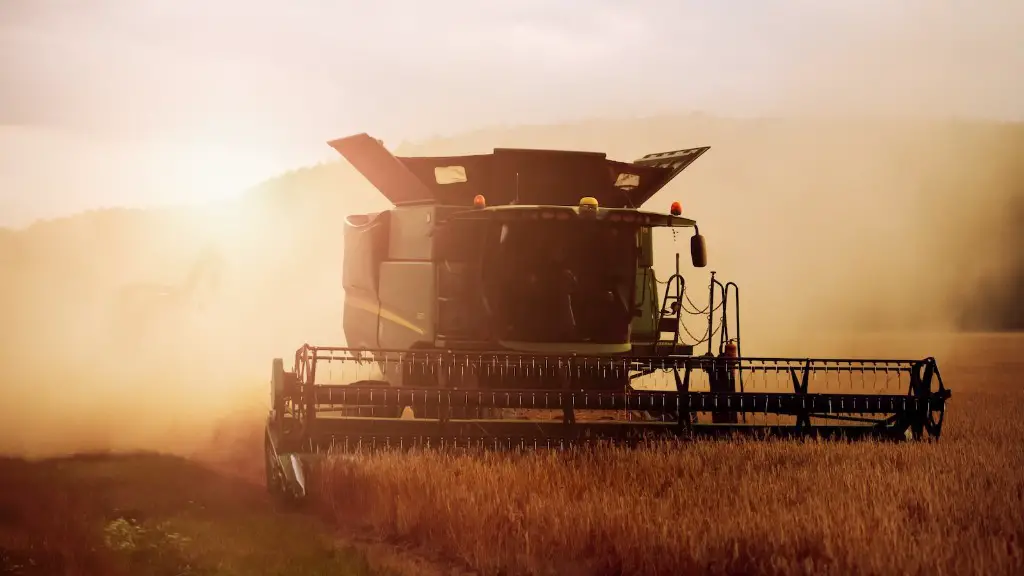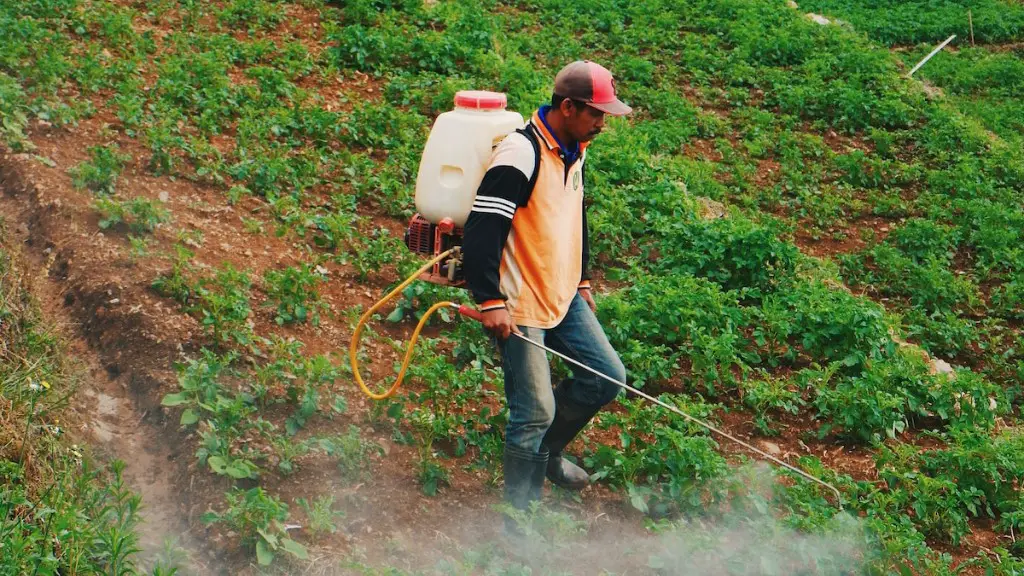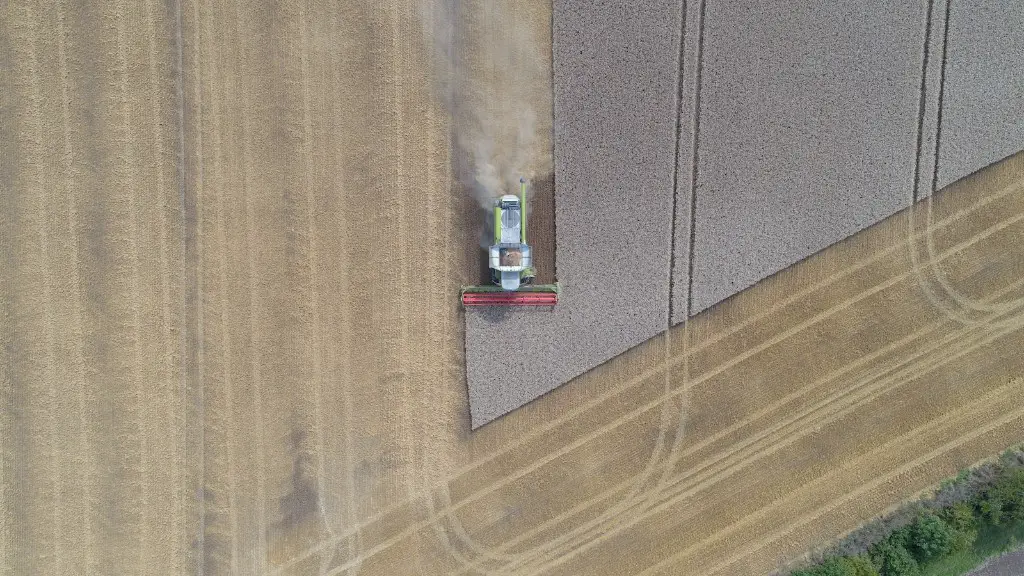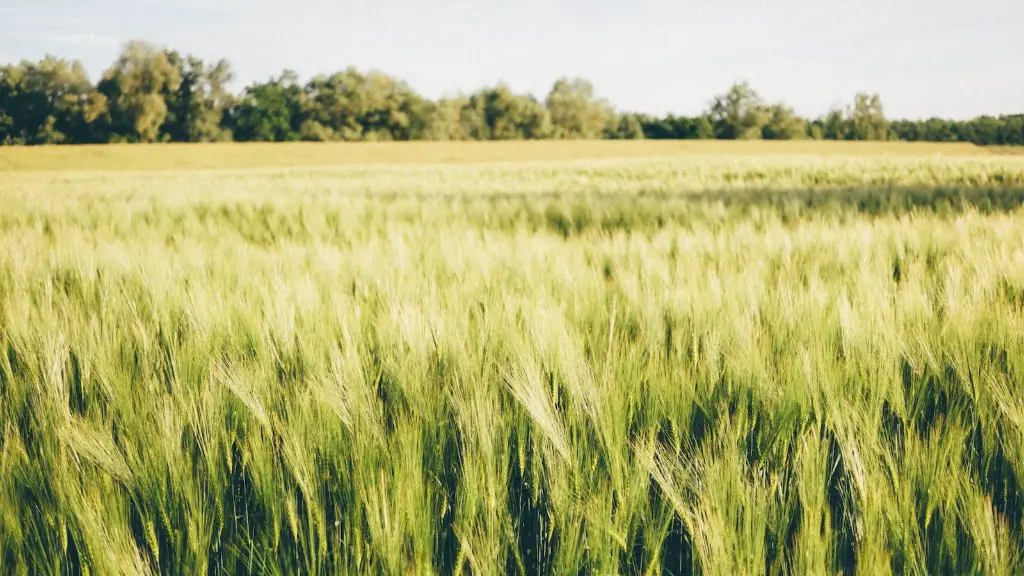Agriculture is the art and science of cultivating the land and raising livestock. Agriculture was the key development in the rise of sedentary human civilization, whereby farming of domesticated species created food surpluses that allowed for the development of more centralized societies. The history of agriculture began thousands of years ago. Agricultural practices such as irrigation, crop rotation, and the use of livestock were developed in different parts of the world.
Agriculture is the art and science of cultivating the land for the production of crops. It includes the husbandry of animals and the preparation of soil for planting.
What is a simple definition of agriculture?
Farming is the science, art, and business of cultivating soil, producing crops, and raising livestock. Farming can be done for a variety of reasons, including to produce food, to support a local economy, or to provide a source of income. Farming requires a lot of hard work and dedication, but can be a very rewarding experience.
Agriculture is the process of producing food, feed, fiber and other desired products by the cultivation of certain plants and the raising of domesticated animals. Agriculture is a vital part of human civilization, providing most of the world’s population with their primary source of food. Agriculture is also responsible for the production of many other important products, such as clothing, fuel, and building materials.
Farming is one aspect of agriculture, involving the cultivation of the land to grow crops. Another important aspect of agriculture is animal husbandry, which involves the raising of domesticated animals for meat, milk, and other products. Plant science is also a vital part of agriculture, as it helps farmers to improve the yield and quality of their crops.
Agriculture is an essential part of the human experience, and will continue to be so for the foreseeable future. With the world’s population projected to reach 9 billion by 2050, it is clear that we will need to produce more food than ever before. Agricultural science will play a vital role in meeting this demand, through the development of new and improved methods of food production.
What is an example of agriculture
Agriculture, aquaculture, and horticulture are all important methods of cultivating and raising plants and animals. Agriculture involves cultivating soil, planting, raising, and harvesting crops, while aquaculture focuses on raising private aquatic animals (fish). Floriculture is the practice of growing flowering plants, and horticulture is the cultivation of fruits, vegetables, and other plants. All of these activities are important for sustaining life and providing food and other products for people and animals.
The agricultural sector is vital to both economic growth and poverty reduction. Growth in the agriculture sector is two to four times more effective in raising incomes among the poorest compared to other sectors. Agriculture also accounts for 4% of global gross domestic product (GDP) and in some least developing countries, it can account for more than 25% of GDP. Therefore, investments in the agricultural sector are critical to achieving sustainable development.
What are the 7 sectors of agriculture?
The agricultural sector is a critical part of the economy, providing food and other products for people and animals. The sector includes many different types of businesses, from small family farms to large multinational corporations.
The agricultural sector is divided into two main categories: production agriculture and agribusiness. Production agriculture includes activities such as growing crops and raising livestock. Agribusiness encompasses all other activities related to the agricultural sector, such as processing and marketing food and other agricultural products.
The agricultural sector is an important source of jobs and economic activity. In the United States, the agricultural sector employs more than 1 million people and contributes more than $100 billion to the economy each year.
Agriculture is a vital part of human civilization, providing us with the food we need to survive and the economic resources we need to thrive. It is a complex and dynamic field that combines the creativity and imagination of farmers and ranchers with the modern production methods and technologies of the industrial world.
The future of agriculture depends on our ability to continue to innovate and adapt to the ever-changing needs of our planet and its people. We must find ways to produce more food with fewer resources, to protect our natural resources from degradation, and to provide economic opportunities for the next generation of farmers and ranchers.
The Agricultural industry is an important part of the American economy. In 2012, the industry contributed $172 billion to the economy and employed more than 2.1 million people. The industry is expected to continue to grow in the coming years, providing even more economic opportunities for those involved in it.
What words describe agriculture?
Agriculture refers to the cultivation of land and raising of crops for human consumption. Farming is a type of agriculture that typically involves the use of animals, plants, and other resources for the purpose of producing food, fibers, or other desired products. Horticulture is a type of agriculture that focuses on the cultivation of plants for their beauty or usefulness. Cultivation is the process of preparing land for crops or other purposes. Gardening is a type of horticulture that typically involves the planting and care of flowers, vegetables, or other plants for aesthetic or functional purposes. Agribusiness is a type of business that typically involves the production, processing, and marketing of agricultural products. Husbandry is the practice of raising and caring for animals for the purpose of producing food, fiber, or other desired products. Agronomy is the science of using plants for food, fuel, fiber, and land management. Agroecology is the study of the ecological interactions between plants and animals in agricultural systems.
There are four main branches of agriculture, namely livestock production, crop production, agricultural economics and agricultural engineering. Each branch has its own focus and area of expertise. Livestock production deals with the raising of animals for meat, milk, eggs and other products, while crop production focuses on the growing of plants for food, fibre and other purposes. Agricultural economics deals with the economic aspects of agriculture, such as marketing, pricing and policy. Agricultural engineering deals with the design and construction of agricultural machinery and equipment, as well as the management of water and soil resources.
What are 3 reasons why agriculture is important
Agriculture is vital for many reasons. It is the main source of raw materials for industry, it is crucial to a countries development, it plays a big role in a nation’s revenue, it provides employment, and it can help heal the environment.
No, BSc Agriculture is not easy. You will face many difficulties during your study. But, if you are truly interested in agriculture, it is not difficult. There are several job options available to you after completing a BSc in agriculture.
What are the main types of agriculture?
Currently, agriculture is divided into two different types: industrialized agriculture and subsistence agriculture.
Industrialized agriculture is typically characterized by large-scale production, the use of sophisticated technology, and long supply chains. In contrast, subsistence agriculture is typically small-scale, reliant on simple tools and techniques, and much more reliant on local resources.
The dividing line between these two types of agriculture is not always clear, and there is often a lot of overlap between them. However, the two types of agriculture do have some distinct differences.
The top sugar producing countries in the world are Brazil, India, and China. Together, these countries produce over 50% of the world’s sugar cane. Brazil is by far the largest producer of sugar cane, with almost 60% of the global production. India is second, with about 20%. China is a distant third, with about 5%.
Sugar cane is grown in tropical and subtropical regions around the world. The main sugar cane producing countries are Brazil, India, China, Thailand, Pakistan, Colombia, Mexico, the Philippines, and Australia. Brazil is the largest producer of sugar cane in the world, followed by India and China.
The sugar cane plant is a tall, perennial grass that can grow up to 20 feet (6 meters) tall. It is native to warm, moist regions of Asia and Africa. Sugar cane is a major crop in many countries in the tropics and subtropics, where it is used to produce sugar, molasses, and ethanol for biofuel.
The sugar cane plant is a tall, perennial grass that can grow up to 20 feet (6 meters) tall. It is native to warm, moist regions of Asia and Africa. Sugar cane is a major crop in many countries in the
What are 5 important of agriculture
Agriculture is a vital part of our economy and we rely on it for the food we eat. It is also a major source of employment and income for many people across the country.
The government provides a lot of support to the agricultural sector, including subsidies and tax breaks. This is because agriculture is important for food security and for ensuring that we have a stable supply of food.
There are also many environmental benefits to agriculture. For example, it can help to improve soil quality and to reduce pollution.
Overall, agriculture is essential for our economy and for our food security. It is also a major source of employment and income for many people.
Agriculture is responsible for a lot of things that we take for granted in our daily lives. Here are seven ways that it affects us:
1. Food: Agriculture is responsible for the food that we eat. Without farmers, we would all be hungry.
2. Fuel: Farmers produce a lot of the fuel that we use, like corn for ethanol.
3. Textiles: Agriculture provides the raw materials for a lot of our clothing, like cotton and linen.
4. Sleep: agriculture affects your daily life by providing the cotton for your sheets!
5. Sports: many sports, like golf and tennis, rely on agriculture for their turf.
6. The Economy: agriculture is a huge part of the economy, both in terms of the jobs it provides and the products it produces.
7. Personal Care Products: a lot of personal care products, like soap and shampoo, contain ingredients that come from agriculture.
What is the most important role in agriculture?
The role of agriculture is essential for the production of food and other raw materials for both rural and urban populations. The land is a basic resource for agriculture, and rural or developing areas have an abundance of it. Agriculture is responsible for the production of food and other materials that are necessary for daily life. Without agriculture, the world would not be able to function.
There are many benefits to having an urban farm, including lower greenhouse gas emissions, minimal transportation requirements, and reduced energy use for food production. As the benefits are becoming more and more acknowledged, the trend of urban farming is starting to become quite popular.
Final Words
Agriculture is the art, science, and practice of cultivating the soil, growing crops, and raising livestock. It includes the preparation of plant and animal products for people to use and consume, and the preservation of natural resources like forests, wetlands, and wildlife.
Agriculture is a process of growing and cultivating plants and animals for food, fiber, and other products used to sustain life. It is the foundation of our food system and plays a vital role in our economy and way of life.




